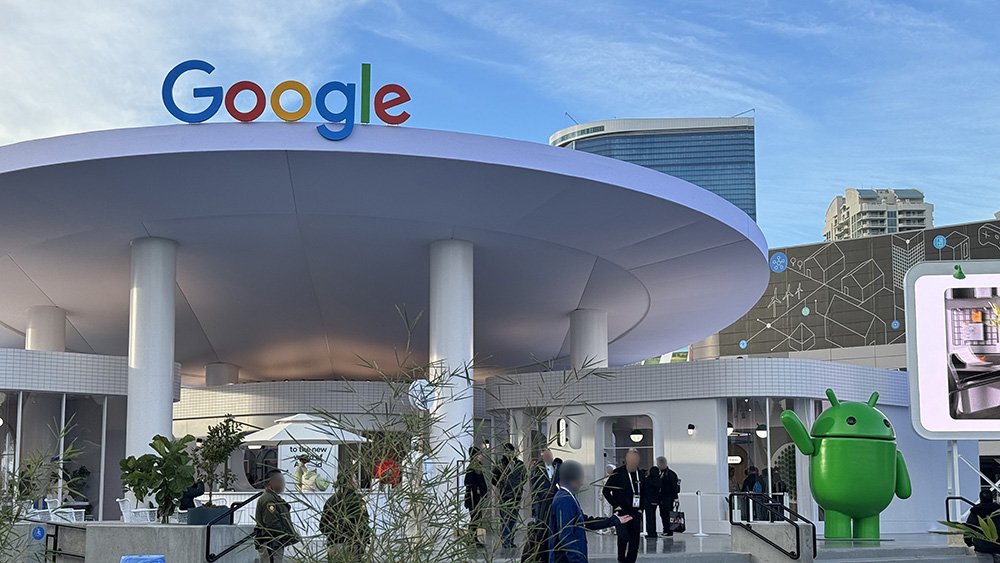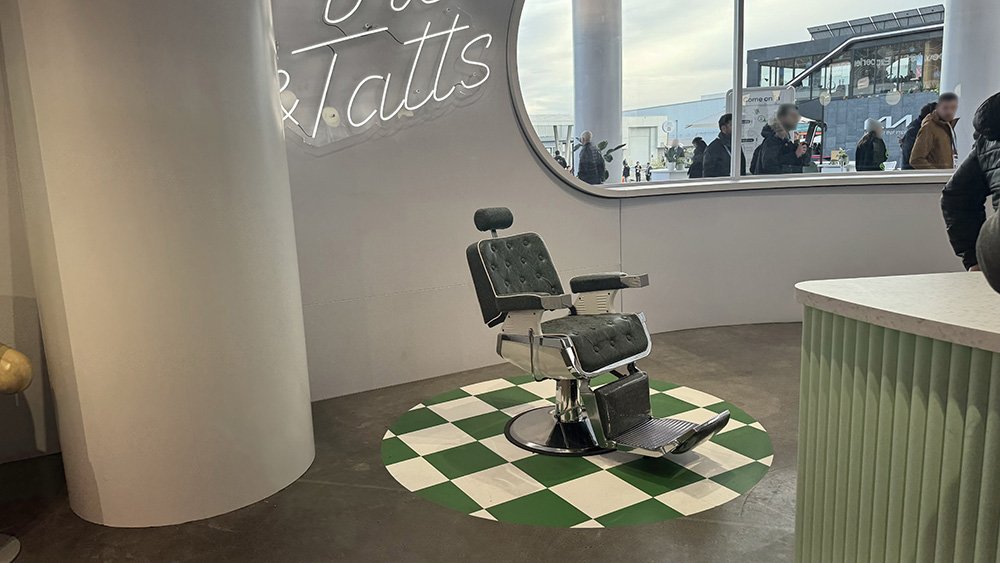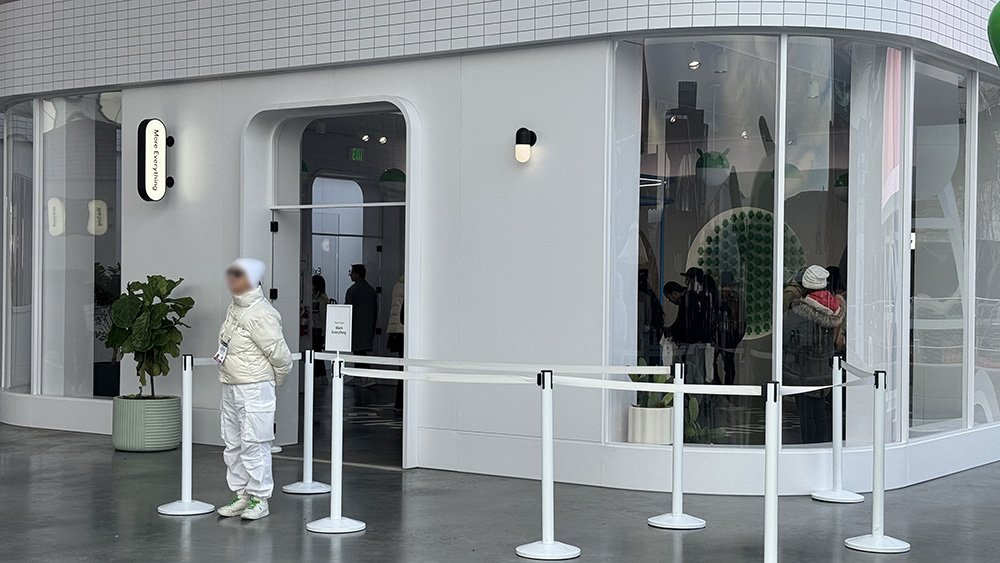In January, Yoshida and Ogawa attended CES in Las Vegas. It was our first overseas business trip, filled with excitement and anticipation! Here, weʼll share some of the most memorable experiences from CES.
AI × Mobility
Yoshida: A major trend at CES 2024 was AI × Mobility. Among Japanese companies, Sony Hondaʼs AFEELA stood out. AFEELA features an in-car generative AI developed in collaboration with Microsoft, offering new entertainment experiences in film, music, and gaming. The most noticeable feature of the interior is the large display, which allows for a customizable layout similar to a smartphone. They are also developing games that can be enjoyed on a 3D map, with prototype navigation showing images of dinosaurs and underwater scenes. You can even customize themes like Spider-Man or Fortnite.

AFEELA, the future of mobility that connects with your intelligence. The latest prototype has arrived.
Yoshida: The most distinctive exterior feature is the media bars at the front and rear. These display weather information, customized graphics, and can even reflect the presence of nearby pedestrians with smooth animations. As self-driving technology advances, features that signal awareness of the surroundings will become increasingly important. Despite its extensive functionality, the design is very simple, with no door handles. The car recognizes the driver and their family, opening the doors automatically. The minimalist design resembles home appliance product design. The exhibition space was similarly minimalist, with lighting and CMF (color, material, finish) creating the ambiance.


Ogawa: Companies beyond the automotive industry also showcased their services through mobility. Samsungʼs AI assistant Ballie was very popular. During the demo, it was so crowded that the small Ballie was barely visible, haha. Ballie can move around the house, control appliances via voice commands, and project images from its "eye" that serve as a projector. Itʼs a very useful robot for scenarios like exercising or cooking when your hands are occupied.
Yoshida: When projecting, Ballie can automatically adjust the projection angle based on the userʼs posture and facial angle. The eye position, shape, and the tail-like part that supports its stance all contribute to its cute design as a companion character.
Combining Visuals and Reality
Ogawa: A noticeable trend at CES was the combination of visual and real-world space in exhibitions. KIA introduced the modular concept car "PV5," adaptable to various user needs. Their exhibit featured the Park City Factory Home and depicted four diverse scenes with charming low-poly visuals. This cohesive world was reflected in the real-world exhibit with similar visual elements like trees and rocks.


Ogawa: LG showcased their transparent display prominently. Traditional displays leave a stark black rectangle in the home when turned off, clashing with interior decor. Transparent displays, however, blend seamlessly with home interiors. This technology also had interesting commercial applications. For instance, in a bakery, a transparent display on the showcase can show cake descriptions, prices, and the shop logo while allowing customers to see the actual cakes. On trains, windows can double as transparent displays, providing information about the next stop and nearby attractions. This innovative way of conveying information could have many future applications.



Large Booths by Hyundai and Google
Ogawa: Hyundaiʼs booth showcased future mobility utilizing hydrogen energy. The introduction video, played on three huge screens, created an immersive experience as attendees entered the booth. Contrary to the videoʼs dramatic tone, the boothʼs interior was unified in white, giving a clean impression. Projections on the walls accompanied by concept cars and experience booths centered around displays explaining the hydrogen value chain from production to storage, transport, and usage. This well-organized and visually appealing presentation made it easy to understand.
The most memorable display was the CITY POD concept envisioning future logistics systems. The autonomous truck features a central cargo area and no driverʼs seat, making the front and rear designs identical.


Ogawa: Googleʼs booth felt like a real store. Focused on smart home and appliance integration, the boothʼs setup was impressive, resembling a retro pop cafe with items like barbershop chairs and mailboxes.


Yoshida: Google showcased a service that helps create text in various styles like Excited, Short, or Shakespeare. The created text could be printed as a postcard on-site, which you could write a message on and either mail or keep as a souvenir. The postcards were made from 100% recycled paper, adding an eco-friendly touch.

Ogawa: The staffʼs attire varied from down jackets to vests and hoodies, yet the consistent color and texture created a unified and stylish look. Some staff members even danced to the music, adding to the lively atmosphere, haha.

Venetian Expo Filled with Startups
Yoshida: The Venetian Expo hosted startups from various countries like France, the Netherlands, Korea, and Japan. One notable startup was COLDRAW, which uses vacuum technology to rapidly extract flavors from botanical ingredients to create beverages. I tried a sample, and it was surprisingly delicious. This product aligns with the "sober curious" trend, offering sophisticated non-alcoholic drinks for those who choose not to drink alcohol. The drinkʼs flavor evolves from the first sip to the aftertaste, providing a unique experience.


Ogawa: By reducing cold brew extraction time from 8 hours to 10 minutes, this process also allows enjoyment of the color change during extraction. The aromatic experience might also be similar to enjoying coffee.
Yoshida: Though still a prototype, Iʼd definitely purchase this product once itʼs available.
COLDRAW is an open innovation platform that provides a new WOW experience in non-alcoholic beverages by combining botanical ingredients, innovative technology, and an engaging user experience.
Yoshida: BSI WIMAGINE is researching a device implanted in the brain to help paralyzed limbs move. It sounds like sci-fi, but itʼs already shown results in experimental treatments, featured in prestigious publications like Nature. The Brain-Spine Interface (BSI) allows users to control movements just by imagining them. This device reads the brainʼs electrical activity and sends signals to the spine to enable movement. Although the idea of implanting such a device in the brain is daunting, it could become commonplace in the future.

A Brain-Spine Interface to help paraplegic patients regain mobility
Yoshida: The SUMSEI booth stood out for its experiential design. Behind the product display area, there was a narrow passage where visitors could experience the productʼs concept. After removing their shoes, visitors walked through different textured areas, starting with wet stones and progressing to a beach with sand and a peculiar sticky surface, accompanied by corresponding sounds. After the experience, visitors dried their feet using SUMSEIʼs foot dryer.

Yoshida: "SUMSEI is a Korean lifestyle brand that offers products and experiences that allow you to feel nature anytime, anywhere.
I think that saying something like 'Sensory experiences in nature are great' can sound a bit cheap when put into words, but I found it wonderful that their method of exhibition lets you feel it without explicitly saying so.
I later found out that SUMSEI also creates terrarium spaces. To quote their official description, 'SUMSEI TERRARIUM is a sensory exhibition that layers natural experiences, offering time to fully engage with nature and use all five senses. Spanning five floors from the underground cave to the rooftop, it aims to create a deeper sensory experience through spatial design that gradually awakens your senses. (...)'
It seems they even won the iF Design Award in 2022. Iʼd love to visit if I ever get the chance to go to Korea."
VEGAS LOOP
Yoshida: The CES venue was vast, and moving around took a lot of energy, haha. Buildings appeared close but took forever to reach on foot.
Ogawa: We tried the new transportation system, the VEGAS LOOP, created by Elon Musk. This underground system connects three CES venues, with Tesla cars picking up passengers one after another. The minimal wait time was a plus. While I expected an exhilarating ride, it turned out to be a normal commute. The LED-lit tunnels were a nice touch.


Yoshida: The system is expected to expand, improving accessibility. I hope future CES visits will have more convenient mobility options, making it easier to navigate the vast venues!
Other ActivitiesAll Activities
WorksAll Works







